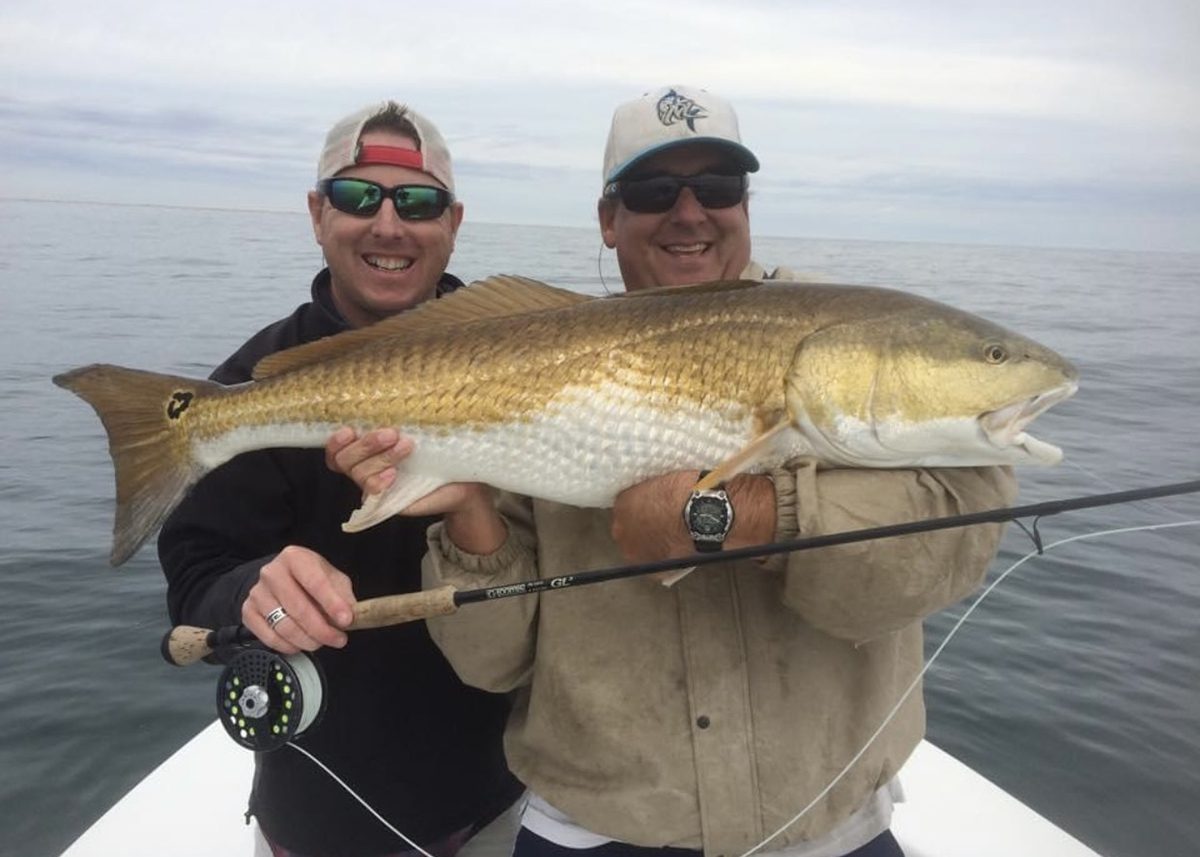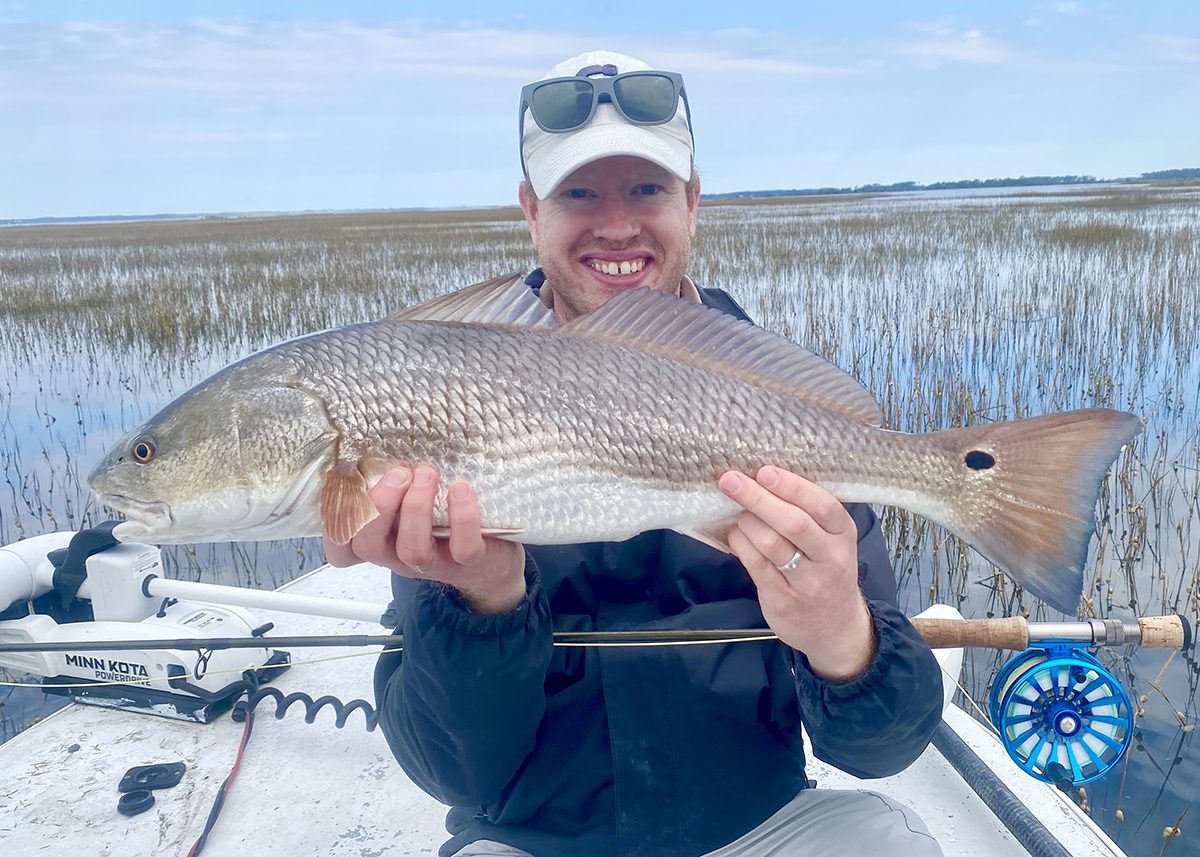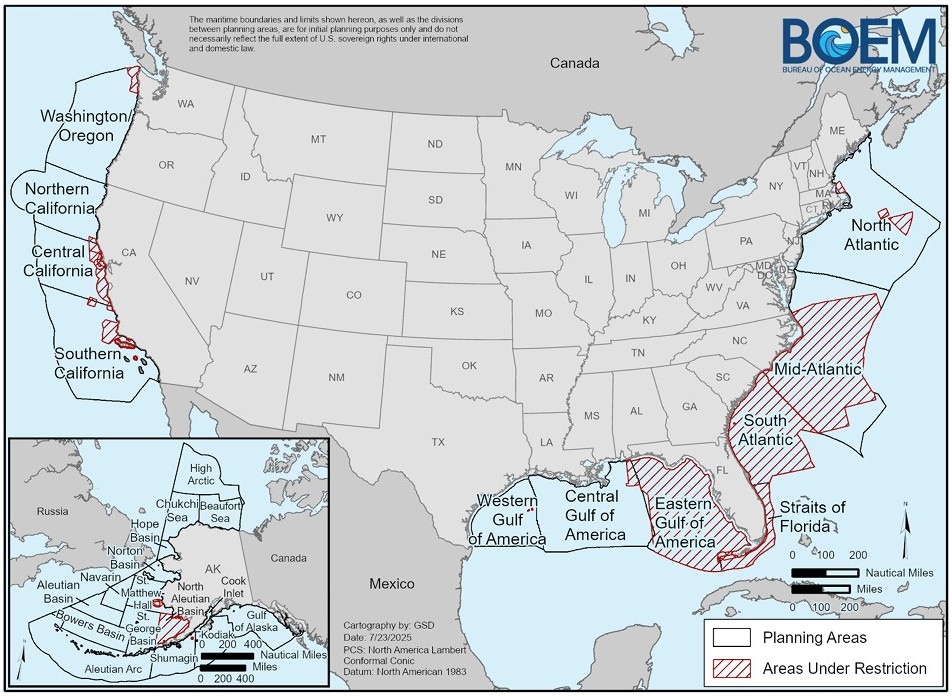
Most people probably know that the state fish of North Carolina is red drum, or also called redfish. The state keeps records of catches of recreational fishermen and apparently a whole lot of people who fish in saltwater in North Carolina don’t really catch very many red drum.
Why do you suppose that is?
Supporter Spotlight
I expect it is because people go fishing and just look to catch whatever swims by. If you want to catch Mr. Red, you have to target him. Let’s talk about finding them and maximizing the opportunities for you to catch one when you want to.
Let’s start with everybody’s favorite time of the year, spring and early summer. At this time of year red drum are very active, eat lots of things and can be targeted in myriad ways. My favorite way has always been a fly rod.
I target fish feeding in visible areas on the edges of creeks and flats as they are looking for shrimp and baitfish. In the same places, casting a surface plug or a shallow running lure like a gold spoon in creeks and flats can produce fish as they cruise.
Capt. Rick Patterson of Cape Crusader Charters will target red drum on cut chunks of menhaden at the mouth of creeks on the outgoing tide. He will rig under a popping cork float to keep the hook from catching on the bottom, as there are often oyster shells and lots of other things to get snagged on.
At this time of year red drum will be in the places that you find them. By that I mean that they’re spread out and highly active. As they move from place to place, they will find locations they like better than others. When you find a good spot, they will often return to the same place over and over, so don’t overfish them. You can clean them out.
Supporter Spotlight
With that in mind, fishing bait chunks should only be done with circle hooks and the trebles on surface plugs should be replaced with single hooks. These simple changes will make it easier to release fish that you are going to let go. Don’t kill your limit.
One of the things I was well known for was targeting redfish during high tides on the spartina grass flats with my fly rod. I was among a few innovators of this specialized fishery in the 1990s, targeting specific fish, sight feeding in the super-shallow, clear water that is pretty unique to coastal North and South Carolina.
In late summer, an incredible event that happens in North Carolina waters will lead to huge red drum in shallow areas along the Neuse River. You have probably seen the pictures of people holding up redfish in the 50-inch range on their laps. I like to call this style of photos “lap dances.” This leads to huge fish being caught — if you know how to target them.

You’re probably going catch the biggest fish you’ve ever caught in pretty shallow water. It doesn’t even take that much effort if you have a little foreknowledge. Once again, we’ll ask Capt. Rick for a couple of ideas how to look for these monsters.
“You can’t go wrong with cut bait on a Carolina Rig. Shad, mullet, croakers — just about anything will work,” Patterson said. He has specific areas in which he looks for them. “I like to fish the shoals on the main river shore. Long points are good also.”
You can also catch them on artificial lures if you know what you’re looking for, he advises.
“Use popping corks with plastic baits: Gulp, Z-man, or whatever you have confidence in,” he said. “Top water and swim baits if you can find them schooling on bait.”
The latter actually happens more frequently than you would expect. When it does, it’s pretty exciting. Be prepared.
Let me point out that this is strictly a catch-and-release fishery because all the fish are above the upper slot limit and they are spawning. It’s critically important to the overall health of the fishery. Use heavy gear. Get them to the boat rapidly for a quick picture and let them go. The fish should not be inside the boat for more than 30 or 45 seconds.
As the water cools through the fall and into the winter, this is my favorite time to target red drum. It’s not uncommon to catch and release upwards of 30 to 40 or more in a day. The secret lies in finding them in the first place. When you find one you will have found them all. If you don’t find any, you won’t catch anything. It’s an all-or-nothing situation.

Look for deeper holes with marshy areas in channels wending back — the deepest spot you can find. It may only be a foot or so deeper than the rest, but when you find the spot, you’ll know. The fish will pile up inside it and you’ll get plenty of bites in a short period of time. But until you find them, it will seem like there’s nothing there at all.
My favorite type of lure to use is a soft plastic artificial shrimp such as the DOA or Zman. Colors can be anything from kind of bland to fluorescent green. The point is the fish are very hungry but there are not a lot of food options available and they will hit most anything that you can throw in there.
The best bite is usually on the outgoing tide, and be aware that the bottom is full of shells, so be prepared to deal with the shallow water. Don’t use bait in this situation because the fish are so aggressive anyway. It’s a waste of money and time.
Again, let me add to please be responsible for the fish that you’re catching. Release them quickly. You could be catching a lot. Treat them well and they’ll be there for you to catch again and again. A lot of pressure can really clean a school of fish out of an area quickly. A particular area where I used to do this type of fishing all time in the winter is now pretty much devoid of fish due to it being too popular and getting too much pressure. The fish have been cleaned out over the years.
If you can follow these instructions, you are going find that you can catch a few red drum this year. This is not by any means meant to be a comprehensive list of ways to catch red drum, but these are just some quick and dirty ways to target the fish that we love to catch.
Just make sure to take care of them, so we will always have them in the future.







